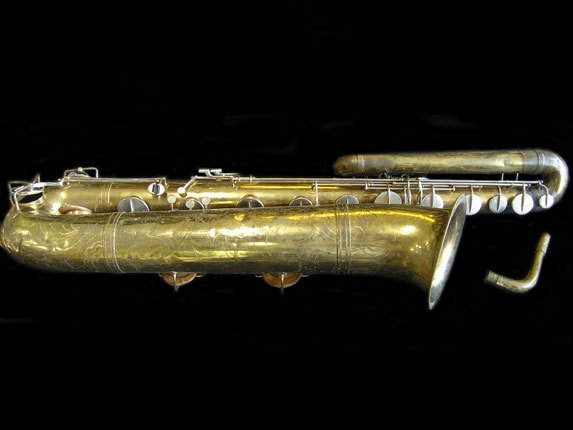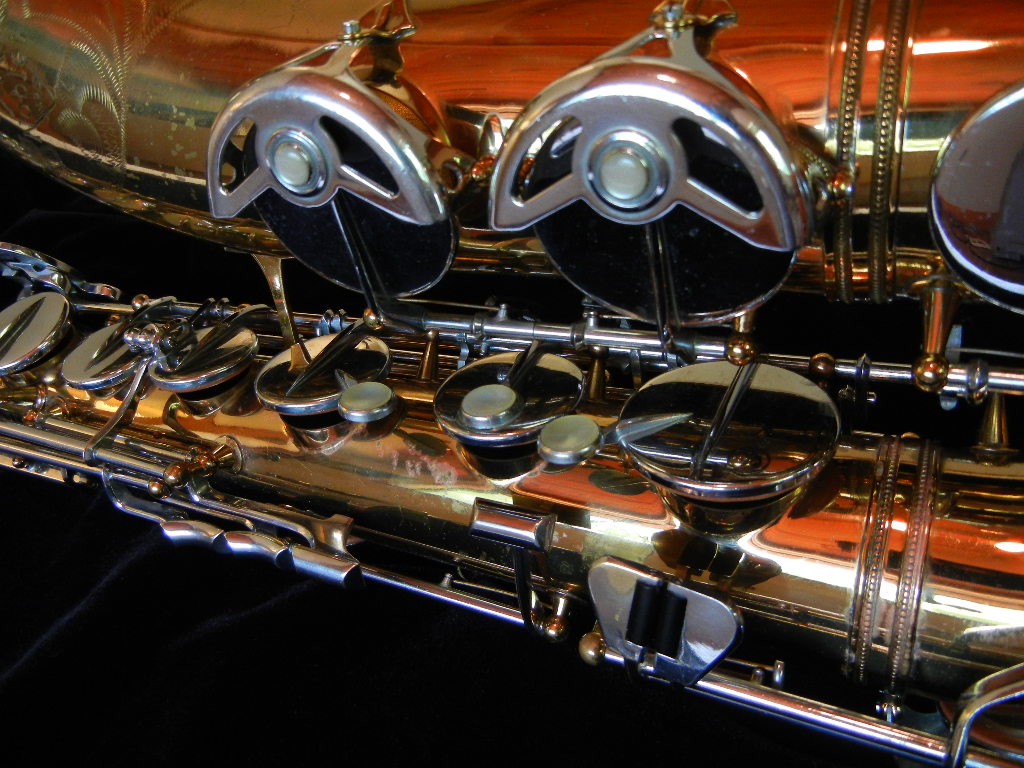- Noblet Saxophone Serial Numbers Chart
- Noblet Paris Alto Saxophone Serial Numbers
- Bundy Saxophone Serial Numbers
G. LeBlanc System Rationale Tenor Saxophone
Sale Price: $2,999.00
Sep 15, 2017 Do not confuse the model number with the serial number. A model number is typically shorter and may have a word in it. Serial numbers are typically longer and are comprised mostly of numbers. For example, a famous saxophone model number is MarkVI, while the serial number could look like 103000.
Price includes small adjustments, please inquire as needed.
- The main annoying thing about Pierret is that their serial numbers seem to mean squat. My opinion is that the serial numbers are representative of each model, rather than a grand total. In other words, a Pierret Modele 7 with a serial number of 7,000 is the 7,000th Modele 7 made, NOT the 7,000th Pierret made.
- Where is there a vito alto sax serial number list accurate? Guest 6 years ago. I have a Leblanc Vito Alto Sax with the serial number N11795. Vito Serial Numbers Instruments for Sale - Here is a table of Vito Sax serial no.' S, manufacture dates, manufacturers, country of origin, etc.
- Year: ~1960 (see below)
- Make: LeBlanc
- Model: LeBlanc System Rationale - Model 120
- Status: For Sale!
- Finish: Lacquer 90%+
- Serial Number: 494
(On Consignment - Inquire about included adjustments(near G key needed))


One of the coolest saxophones ever made! - Made to solve most all of the 'saxophone issues' such as stuffy notes, trouble intonation areas and note passages. Data would suggest that there were less than 750 (alto and tenor) ever made. The design with intonation and evenness with tone hole venting was also so engineered that it has mass amounts of screw adjusters (Add $300+ to a rebuild price for such; more pads, more adjustments like a Conn 26M/30M...). I have seen multiple variations on this model as they may have made changes along the design (different neck emblems, octave keys..., most notable -- You can compare it to Sarge's Collection LeBlanc too; at #513 it had a different neck altogether! I won't list all of those.) Other notables:
-gold plated springs
-LH high F#/trill key!
-backside G#
-heavy construction
-screw + locking nut adjusters; ALL there!
-two-tone model
-post construction (some are brazed directly on the body!)
-jump keys(trills)
-...
Confession: Serial number dating information on these is a bit low; considering how cool these are, I wish we sax-community members would build this one up along with all the variations that I've seen. Some will say 1950s, some 1960s. It's pretty safe to say that its era is in the range of 1955-1962. With extensive research, there have been original receipts of a #549 purchased in 1963, thus, my labelled era on this one is ~1960.
Research: With combined research from S. Meier, at the time of this post, we have traced about 185 LeBlanc/Vito/Beaugnier saxes from serial numbers #100-1400. Of the 185, only 29 are these 'Model 120' tenors (64 were altos 'Model 100'). Some sax forum rumors discuss that there were less than 1500 of these made(alto and tenor). I would conclude that the dating of LeBlancs was inconsistent! These are far more rare than '1,500' out there. I suggest that: 93/185 is 50% sample rate. Apply that to Serial #100-1400, = 1300 total, and you have 750 as an adjusted, estimated quantity ever made... now apply the alto-to-tenor ratio of 31%, that means:
Only 200-400 'Model 120' tenors exist.
SPECS: The sax is in great shape overall but does have a few bumps to mention from age: The neck shows signs of pull-down that is mostly repaired already and I can repair the rest during a rebuild. I see a few dings/pings from the backside and bow (or evidence of removal, see C# guard post too), there is a resolder on the bell-to-body brace and a slight indent inside the bell, sadly. I don't see any functionality issues from this to worry about. There is only one missing screw (backside pants guard) to mention, ALL NUTS ARE PRESENT!--wow.
***Remember, I promote honest sales and inspections. So when I list my critiques on cosmetics, consider that I see more than most people do or will.
SOUND: Big, resonant, loud but centered core, controllable power, focus yet depth....
Chadd Comment: 'They remind me of a SML Rev D/GM crossed with a Buffet S1!'
PADS: the setup is currently in original setup! (I love that) with old pads and screw in resonators (must be reused). ***It may be missing the F3 reso. It does play and would currently get a 'Plays Rough, on old pads' evaluation; however, I'm able to help with minor repairs to be included in the lower 'as is/tuned up' price that is listed (now $2999).
CASE: Original LeBlanc case in vintage condition. It arrived with a lightly 'old' smell so I'll treat that with some of my special cleaners. Ask me how this ends up.

Noblet Saxophone Serial Numbers Chart
For other fun research, I have also enjoyed Goodson's post on this sax here: LeBlanc Rationale Saxophone Literature.
Sound Files on Leblancs:
- TENORs-52Super20_51SMLrevD_50sLeBlan
- 2.TENORs 4x: 1973 Selmer #216k, 1964 LeBlanc Rationale #790, 1955 Conn 10M #566k, 1955 Buescher AristoIV-157 #356k on MPC: Noblet N2 0.090', Sound File 11-2019
See Track 2 above to hear these 4 saxes in a Sound File:
Item #:CON-DG.10-2S68S0.00.10041.7-F60
The history of Leblanc dates back to 1750 when Ets. D. Noblet was established in France making instruments for the court of Louis XV. Noblet would help establish France as the center of woodwind manufacturing. In 1904, Noblet found himself with no heir to the family business, and it was sold to Georges Leblanc.
The Leblanc family was known for using scientific acoustic research in the development of clarinets. Georges’ son Leon was an outstanding clarinetist and won the top prize from the Conservatoire de Paris. As an accomplished player, he believed heavily in the scientific principles of manufacturing and brought a high level of consistency and playability to their hand-made instruments.
In 1921, Leblanc began distribution in the US with Gretsch & Brenner in New York. However, the Leblanc family became unhappy with the amount of work involved in making adjustments to the instruments after months of travel at sea from France. In 1946, Vito Pascucci, a repairman for the Glenn Miller band, founded Leblanc USA in Kenosha, Wisconsin and took over the distribution of Leblanc France products in the US. Vito opened a small store front and began building his own student level instrument, leaving Leblanc to focus on the full range of professional instruments.
In 1950, Vito hired his first educator to help develop a focus on programs and materials specific to the area of music education. Leblanc continued its focus into establishing a stable base of school music focused dealers that would later found the organization National Association of School Music Dealers (NASMD).
Noblet Paris Alto Saxophone Serial Numbers
In 1960, the brand Vito was created with a complete line of composite student clarinets. In 1961, the Positive Radial Alignment Guide (P.R.A.G.) which is still used today, was patented to help beginning clarinet students properly assemble the top and bottom joints of their instruments.
In 1964, Leblanc would acquire the Frank Holton Company and in 1971, the Martin Band Instrument Company. The focus on a full line offering of brass and woodwind instruments provided significant growth and in 1989, Vito purchased 65% of the Leblanc France Company. As Leblanc France was considered a National Treasure by the French government, it was difficult to process an entire purchase agreement with an American company. It wasn’t until 1993, that the remaining 35% was acquired by Vito.


Bundy Saxophone Serial Numbers
In 2004, Leblanc was acquired by Conn-Selmer and a new era of manufacturing began. In 2009, Leblanc released the Bliss line of clarinets in partnership with namesake, Julian Bliss. The Bliss clarinets offered unique features and playability not typically found in affordable student instruments. With all clarinet production for Leblanc Vito and Bliss clarinets moved to Elkhart, Indiana, a new level of craftsmanship and innovation emerged.